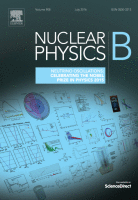 The impact of Borexino on the solar and neutrino physics
The impact of Borexino on the solar and neutrino physics
Gianpaolo Bellini
Nuclear Physics B – Volume 908, July 2016, Pages 178-198
DOI: https://doi.org/10.1016/j.nuclphysb.2016.04.011
Abstract
The Borexino detector is characterized by a very low background level due to an unprecedented radio-purity, which allows to study the entire spectrum of solar neutrinos from very low energies (∼150 keV). The solar neutrino rates from pp, 7Be, pep, 8B (with a threshold down to 3 MeV) and a stringent limit of the CNO cycle rate have been already measured. In addition evidences of a null day/night asymmetry and of the solar neutrino flux seasonal variation have been reached.
The contribution provided until now by Borexino in understanding the neutrino oscillation phenomenon concerns the first evidence of the oscillation in vacuum and the determination of the survival probability in vacuum: these results validate the paradigmatic MSW model in the vacuum regime.
The Borexino results are also in good agreement with the Standard Solar Model predictions, but the metallicity puzzle is still unsolved. In addition the pp flux measured by Borexino shows a good agreement with the Solar luminosity.
Evidence of geo-neutrinos has been also obtained at the level of 5.9σ C.L.
Borexino is still taking data in order to: upgrade the precision of the solar neutrino rates already measured, increase the sensitivity to the neutrino flux from the CNO cycle and hopefully measure it (very challenging), and test the existence of very short base-line neutrino oscillations.